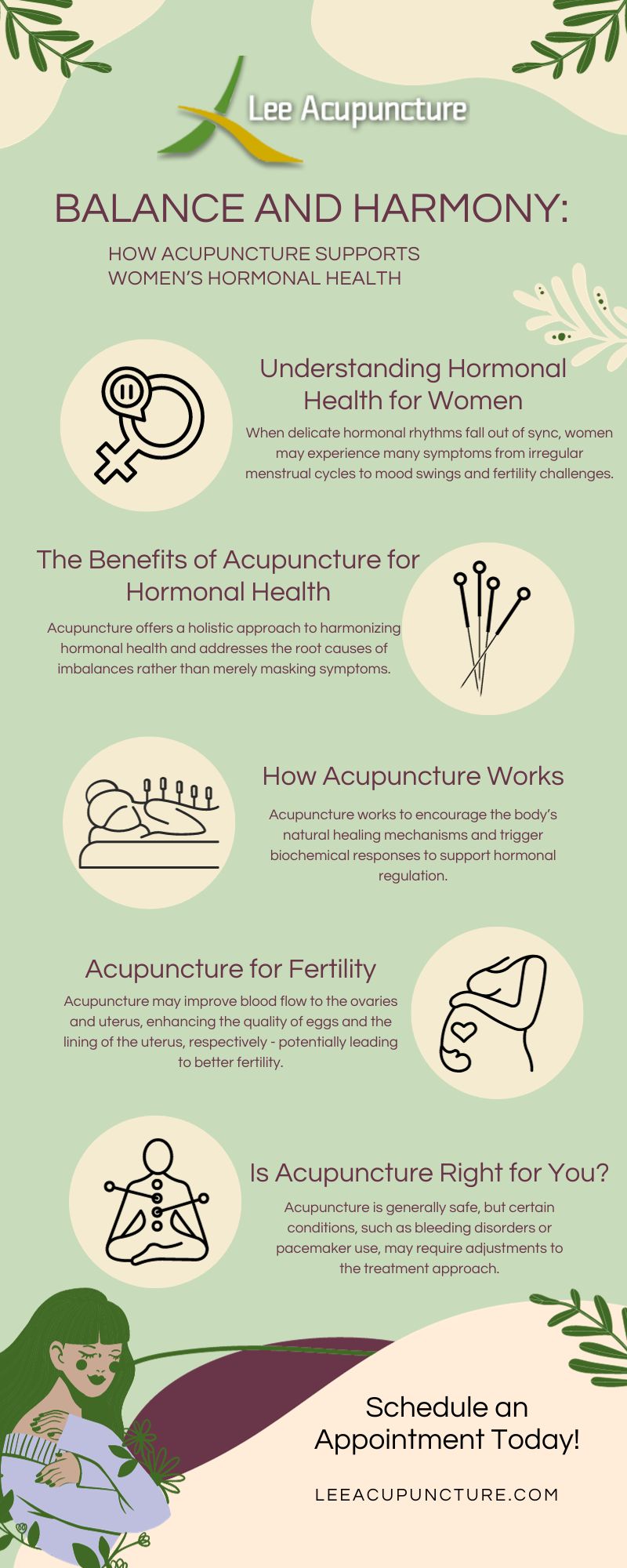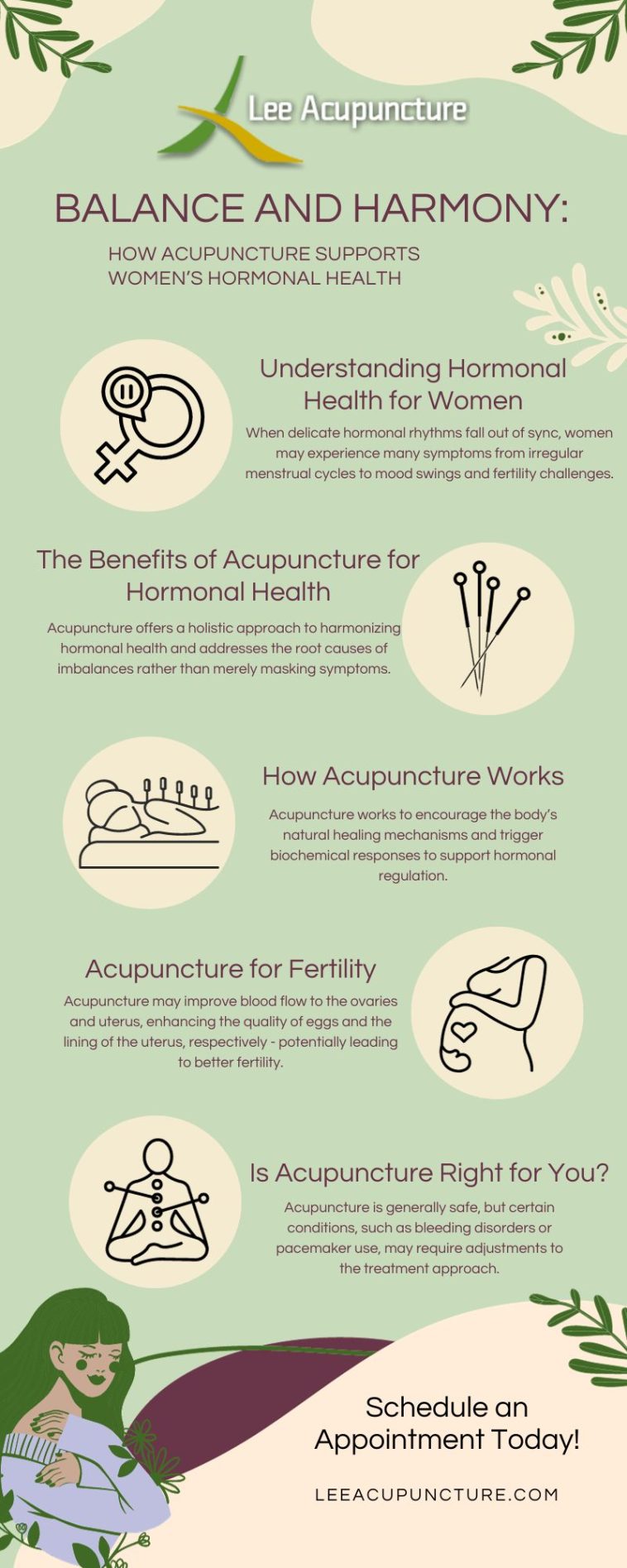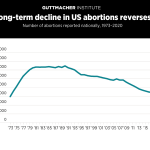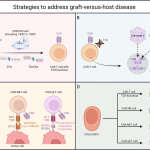
Acupuncture and Women’s Health: A Fresh Look at Traditional Practices in Modern Medicine
In recent years, traditional therapy techniques have slowly won over a skeptical modern audience, and acupuncture stands as one of the most intriguing methods in complementary medicine. With its roots deep in ancient practice, many now wonder how this age-old technique fits into today’s healthcare system and especially its role in maintaining and enhancing women’s health. In this opinion editorial, we take a closer look into acupuncture’s hidden mechanisms, examine its effectiveness for pain-related conditions in women, and consider its potential as both a stand-alone and complementary treatment in contemporary medical routines.
Understanding the Study Behind the Buzz
A recent study titled “Effects and Mechanisms of Acupuncture on Women Related Health,” led by researchers from Harbin Institute of Technology and published in the renowned Frontiers of Medicine, has sparked significant discussions. The research review examined evidence from various sources by combing through data available on PubMed and CNKI. Their goal was to summarize solid evidence behind acupuncture’s ability to address obstacles in women’s health ranging from obstetric complications to gynecological challenges.
In the study, researchers tackled the tricky parts surrounding the way acupuncture works. They explained that the treatment’s renowned analgesic and anti-inflammatory properties might be driven not solely by needle insertion and localized effects, but also by its stimulation of the sympathetic and parasympathetic nervous systems. This stimulation could lead to a cascade of biological reactions that, when put together, ease chronic pain and help soothe other complex issues related to women’s health.
Exploring the Role of Acupuncture in Obstetrics and Gynecology
Traditional Chinese medicine, and acupuncture in particular, has long been used to address a range of conditions in women’s health. From menstrual irregularities to pain management during labor, acupuncture is credited with delivering both physical and mental relief. As more studies examine its benefits, acupuncture is gradually making its way into the medical toolbox of practitioners worldwide.
Women today are tasked with many roles, and the challenges they face are as diverse as they are pressing. With infectious diseases still a problem in various parts of the world and chronic conditions affecting women in developed countries, the need for holistic treatments has never been more important. Acupuncture offers a complementary approach that can work hand-in-hand with conventional medical treatments, reducing reliance on pharmaceutical interventions while also providing a more natural route to healing.
How Acupuncture Stimulates the Nervous System: The Fine Points Explained
At the heart of acupuncture is its ability to stimulate delicate parts of the nervous system. Conventional medicine often finds itself grappling with the tangled issues of chronic pain and inflammation, two problematic areas that acupuncture directly targets. The stimulation of the sympathetic system, which governs the “fight or flight” response, alongside the parasympathetic system, responsible for the body’s relaxation and recovery processes, sets the stage for a balanced and harmonized bodily function.
This research brings clarity to the subtle mechanisms behind such stimulation. The study observed that acupuncture needling might send signals through the nervous system that help dampen pain signals and moderate inflammatory responses. These fine shades of response may not only reduce the discomfort experienced by patients but can also help in restoring a natural equilibrium that is fundamental to overall well-being.
Pain Management and Acupuncture: A Complementary Partnership
Pain is one of the most common complaints among women, particularly when it comes to conditions like menstrual cramps, pelvic pain, and even persistent musculoskeletal pain associated with menopause. Acupuncture offers a promising alternative for alleviating these painful conditions, with many studies, including the one from Harbin Institute of Technology, reinforcing its pain-relieving effects.
One notable advantage of acupuncture is its approach to pain management, which occurs without the side effects often linked to conventional pain medications. This is especially critical for women who need a treatment that is gentle enough for long-term use without causing additional complications. By addressing pain through the body’s own natural processes, acupuncture is able to provide relief where other treatments may fall short.
Bullet List: Key Benefits of Acupuncture in Pain Management
- Reduces reliance on medications
- Manages both acute and chronic pain
- Activates natural nerve pathways to release endorphins
- Offers a non-invasive alternative to traditional pain management methods
Alternative Therapies and Holistic Health: Charting a New Course
The study underscores the growing role of alternative medicine in a world where traditional approaches may sometimes feel overwhelming. By integrating acupuncture into a broader treatment plan, healthcare providers have a complementary tool that addresses several physical issues concurrently—whether it’s managing pain, alleviating stress, or balancing the nervous system.
This integrated approach has become super important in modern healthcare strategies. The world is full of confusing bits and complicated pieces when it comes to treating chronic conditions. Many practitioners now advocate for a more holistic approach that sees the patient as a whole rather than simply targeting one ailment in isolation.
Acupuncture, thus, is more than just a needle-insertion technique—it embodies a philosophy that embraces the body’s interconnected systems. Its ability to steer through the challenges of pain, stress, and inflammation makes it a promising option, particularly for those who seek alternatives to pharmaceuticals or who wish to complement their existing treatment regimens with a natural option.
Socioeconomic Dynamics and the Global Impact on Women’s Health
Worldwide, improvements in public health have significantly increased life expectancy for women over the past three decades. However, life expectancy gains have not always translated to enhanced quality of life, especially when crucial factors like socioeconomic status are not considered. Women in developing countries continue to battle infectious and labor-related diseases, while those in more affluent parts of the world frequently struggle with both physical and psychological disorders.
This inequity makes the discussion around complementary treatments like acupuncture even more compelling. As healthcare systems in both low-income and high-income countries search for cost-effective and accessible ways to improve quality of life, acupuncture offers a practical solution by tackling issues that cut across both spheres. The study opens up discussions on how integrating acupuncture into public health strategies can serve as a super important tool in empowering women and improving community health outcomes.
Table: Comparison of Health Challenges and Acupuncture’s Role
| Region | Main Health Issues in Women | Acupuncture’s Potential Benefits |
|---|---|---|
| Developing Countries | Infectious diseases, labor-related conditions | Improved pain management, stress reduction, immune support |
| Developed Countries | Chronic pain, mental health issues, hormonal imbalances | Non-pharmaceutical pain relief, hormone balancing, integrated wellness |
Scientific Evidence and the Fine Details of Mechanism Research
The Harbin Institute of Technology study is part of a growing body of research aiming to shed light on the little details of how acupuncture works. Rather than treating acupuncture as a mystical art, modern research is taking a closer look at its hidden complexities to better explain how it interacts with the body’s physiology.
Through rigorous analysis and controlled trials, researchers have begun to articulate the subtle parts of acupuncture’s operation. By stimulating specific points on the body, acupuncture appears to trigger neurochemical responses that modulate the release of pain-relieving substances such as endorphins. Additionally, it may also reduce the production of inflammatory markers, thereby lowering the overall inflammatory load—a crucial benefit for many women dealing with chronic pain and inflammation-related disorders.
Furthermore, the study highlights that the effects of acupuncture are not one-size-fits-all. The body’s reaction often depends on the precise application and individual variability, meaning that what works for one patient might not have the same effect on another. This individualization reinforces the need for personalized treatment plans that consider both the efficacy and potential mechanisms tailored to each patient’s health profile.
Traditional Chinese Medicine in a Contemporary Context
Traditional Chinese medicine (TCM) has withstood centuries of scrutiny and adaptation across different cultures. Acupuncture, an essential component of TCM, represents an evolving interplay between traditional knowledge and modern scientific inquiry. It has continually offered alternative solutions to health problems, positioning itself as a cornerstone of complementary medicine in today’s clinical environment.
Critics who view acupuncture through a narrow lens might see it solely as a relic of ancient practices, but a broader perspective reveals that its underlying approaches can be vitally important for tackling today’s multifaceted health challenges. By embracing a method that allows for integration with contemporary therapeutic strategies, healthcare providers can offer a more well-rounded approach to patient care—one that is less intimidating than purely pharmaceutical interventions and offers long-term benefits through natural processes.
Integrating Acupuncture with Mainstream Healthcare: Practical Considerations
One of the key considerations in modern healthcare is finding effective ways to merge alternative therapies like acupuncture with standard treatment protocols. Many general practitioners now admit that the use of complementary medicine can often enhance overall patient outcomes. As they work through the process of incorporating such treatments, it becomes clear that a hybrid approach is the way forward—a strategy that respects both the science of conventional medicine and the more holistic perspectives of traditional methods.
For patients, the idea of integrating an age-old technique into their treatment plan can sometimes feel overwhelming, especially when coming from a background dominated by pills and surgeries. However, many find that acupuncture offers a gentler, more natural way to address their health concerns. This makes it an appealing option for individuals looking to reduce medication intake, avoid potential side effects, and explore a route that is loaded with benefits beyond just pain relief.
Key Points to Consider When Integrating Acupuncture:
- Personalization: Each individual responds to acupuncture differently, so treatments must be tailored to specific needs.
- Complementary Use: Acupuncture can work alongside other therapies to enhance overall wellness.
- Simplicity and Safety: As a non-invasive method, acupuncture is often safe when administered by trained professionals.
- Holistic Benefits: Beyond pain relief, it also helps manage stress and balance the nervous system.
The Psychological Edge: Acupuncture’s Impact on Mental Health
Mental health challenges such as anxiety, depression, and stress are common in many women, often intertwined with physical ailments. One of the less discussed benefits of acupuncture is its positive impact on mental well-being. Through its gentle stimulation of the nervous system, acupuncture might help mitigate stress responses and contribute to a more balanced mood. This opportunity to reduce psychological distress is a key aspect that many patients appreciate.
Patients who have experienced acupuncture frequently mention a noticeable improvement in their overall sense of calm and well-being. This could stem from acupuncture’s ability to trigger the release of natural endorphins, which act as mood enhancers. In turn, these changes can create a more positive outlook toward health management and recovery, alleviating not only physical pain but also the mental load that accumulates when dealing with chronic conditions.
Acupuncture and the Future of Women’s Health: A Progressive Outlook
In today’s fast-paced world of technological and scientific advancements, the revival of traditional techniques like acupuncture might seem like a step backward to some. However, this perspective fails to appreciate how these methods can complement modern medicine and bridge the gap between conventional treatments and holistic care. Looking ahead, acupuncture is poised to play a key role in shaping a healthcare paradigm where personalized and natural approaches are given a super important spot alongside standard therapies.
With more studies emphasizing the effectiveness and hidden mechanisms of acupuncture, its role in managing women’s health challenges—ranging from chronic pain to mental health conditions—will likely become even more prominent. As healthcare professionals figure a path to integrate natural and synthetic treatments, acupuncture stands out as a fitting example of how ancient wisdom can coexist with modern science to achieve comprehensive well-being for women across the globe.
Digging Into the Nitty-Gritty: How Research Sheds Light on Acupuncture’s Mechanisms
One of the most intriguing aspects of the research is its focus on the subtle underlying processes that empower acupuncture’s effects. Researchers have taken a closer look at specific biochemical and physiological responses triggered by this therapy. For instance, points stimulated during an acupuncture session may prompt the release of endorphins—compounds that naturally relieve pain. This process not only neutralizes discomfort but can also reduce inflammation, which is one of the tangled issues in many chronic conditions.
Moreover, acupuncture appears to influence the body’s autonomic control by enhancing the activity of parasympathetic responses. This dual action—simultaneously calming the body and reducing pain—demonstrates how this ancient technique can effectively play a role in balancing the body’s overall energy. Although the exact chain of events continues to remind us of the fine points of the research, the observed benefits carry immense promise for women who struggle with conditions that affect both their physical and mental health.
Real-World Applications: Stories and Case Studies
Beyond the laboratory findings, numerous cases in clinical practice illustrate how acupuncture has transformed lives. Many women suffering from conditions such as fibromyalgia, endometriosis, or menopausal symptoms have reported that acupuncture sessions not only reduced their physical pain but also alleviated secondary stresses linked to these chronic conditions. By mitigating both the visible symptoms and the often nerve-racking mental strain, acupuncture provides a comprehensive approach to health management.
Consider the following real-world benefits:
- Many patients have experienced a decrease in menstrual pain severity, leading to less frequent reliance on nonsteroidal anti-inflammatory drugs (NSAIDs).
- Women undergoing cancer treatments have noted that acupuncture helps moderate treatment-related side effects where conventional treatments may leave lingering effects.
- Individuals with chronic stress report feeling more balanced and relaxed after regular acupuncture sessions.
These anecdotal case studies complement scientific findings by providing a human face to the numbers, showcasing how acupuncture can pierce through the tangled issues that conventional treatments sometimes overlook.
Challenges and Considerations: Working Through the Integration Process
Despite the numerous benefits associated with acupuncture, integrating this method into conventional healthcare frameworks is not without its challenges. There remain several confusing bits and off-putting uncertainties among practitioners and patients alike. The primary concerns often include:
- Lack of standardized treatment protocols for specific conditions
- Variability in individual response to acupuncture
- The need for specialized training and certification for practitioners
- Potential skepticism from parts of the medical community steeped in conventional practices
Addressing these challenges head-on requires both further rigorous research and the creation of more cohesive training programs. When the fine points of acupuncture’s mechanisms are clearly communicated and standardized protocols are established, it will be easier for healthcare providers to get around the lingering doubts and confidently offer acupuncture as an effective treatment option for women.
Building Bridges Between Conventional and Alternative Medicine
The interaction between modern medicine and traditional healing practices like acupuncture can sometimes feel loaded with issues. Yet, a growing segment of healthcare professionals is now taking a more integrative approach, actively seeking ways to merge the best of both worlds. This merging of paradigms can lead to treatment plans that are more comprehensive and patient-centric.
The benefits of such integrative approaches include:
- An overall reduction in medication dependence
- Enhanced patient satisfaction due to more natural and holistic care methods
- Improved management of long-term and chronic conditions through multi-faceted approaches
- The empowerment of patients by giving them more control over their healing process
In a clinical setting, a partnership between conventional and alternative medicine offers a balanced pathway forward. When medical practitioners figure a path to coordinate these approaches, patients receive richer, more personalized care that directly addresses their unique health scenarios. This integrative strategy is not just an experimental technique—it is fast becoming an essential component of modern healthcare delivery systems.
The Patient Perspective: Embracing Natural Healing Paths
For patients, particularly women managing various aspects of their health, the decision to incorporate alternative therapies like acupuncture into their treatment plan is often informed by a desire for more natural, less intimidating options. Many patients report that the idea of embracing an age-old therapy that stimulates the body’s own healing processes resonates deeply with their personal beliefs about health and well-being.
Engaging in acupuncture treatment may feel less overwhelming than jumping straight into pharmaceutical regimes laden with side effects. Instead, patients are presented with a holistic approach that helps them make sense of their body’s needs and supports them over the long haul. The narrative here is simple yet compelling: by offering patients a broader array of effective choices, we empower them to take control of their health journey.
Future Directions: Research, Policy, and Public Health Implications
Looking to the future, the research spotlight on acupuncture is only expected to intensify. As more high-quality studies emerge, we will likely witness a shift in treatment paradigms that fully embrace the potential of traditional therapies alongside modern techniques. The policy implications are significant, as public health systems worldwide realize that offering diverse treatment options can lead to improved health outcomes across different socioeconomic groups.
Key future directions include:
- Enhanced funding for research on acupuncture’s mechanisms and clinical efficacy
- The development of standardized treatment protocols to ensure quality and consistency
- Greater integration of alternative therapies in both urban and rural healthcare facilities
- Improved education for both healthcare providers and patients about the benefits and limitations of acupuncture
As research continues to poke around the finer details of acupuncture’s impact, there is hope that such efforts will eventually translate into widespread acceptance and more structured use in clinical practice. Public health officials and medical practitioners are increasingly recognizing that bridging traditional and modern techniques is not just a passing trend, but a super important evolution in the quest to improve women’s health globally.
Reflecting on the Evidence: Weighing the Pros and Cons
As with any medical treatment, acupuncture is accompanied by both strong advocates and cautious skeptics. Proponents point to its long history of use and growing body of supportive research to advocate for its place in today’s integrated healthcare strategy. Skeptics, however, remain wary of relying too much on methods that might appear mysterious or that lack standardized protocols across different regions and practitioners.
It is essential to take a balanced view by weighing the pros against the potential cons:
- Pros: Non-invasive, natural pain relief, minimal side effects, potential to alleviate both physical and mental distress.
- Cons: Variability in treatment outcomes, need for qualified practitioners, occasional skepticism from parts of the conventional medical community.
Such a balanced evaluation is necessary to ensure that as we adopt acupuncture more widely, we remain mindful of its limitations while leveraging its strengths. In contexts where conventional treatments have reached their limits, acupuncture may well provide the alternative needed to break through the confusing bits of chronic illness management.
Conclusion: Embracing a Blended Healthcare Future
In conclusion, the study from Harbin Institute of Technology shines a spotlight on how acupuncture can play a transformative role in women’s health. By stimulating the nervous system and providing a natural means of pain and inflammation reduction, acupuncture holds promise as a complementary treatment in a layered and nuanced healthcare environment. Its ability to attach its benefits to both physical pain relief and mental health improvement positions it as an increasingly popular option for patients seeking a more integrated approach to care.
While challenges remain in terms of policy, standardization, and practitioner training, the overall trajectory of healthcare points toward a blended future—one in which traditional wisdom and modern science work in concert for the betterment of patient outcomes. Given the growing evidence supporting acupuncture’s efficacy, especially in the realm of women’s health, it is an approach that cannot be easily dismissed. Rather than viewing acupuncture as a relic of the past, it should be embraced as a super important complement to conventional methods—a tool that helps navigate the twists and turns of chronic pain and mental stress.
For those interested in exploring further, the full paper is available at: https://journal.hep.com.cn/fmd/EN/10.1007/s11684-023-1051-5. In the ever-evolving landscape of healthcare, acupuncture emerges not only as a nod to the past but as a beacon for a future in which every avenue—traditional or modern—is considered in the quest for complete, holistic health.
Ultimately, running through the many layers of clinical evidence, anecdotal success stories, and the fine details of neurological responses, acupuncture stands tall as a complementary treatment option whose benefits may ripple across generations. The dialogue surrounding it continues to grow, inviting both healthcare professionals and patients alike to get into the discussion, make their way through the abundant research, and figure a path toward a more balanced and natural approach to wellness.
In our increasingly interconnected world, where the challenges of women’s health reveal both tangled issues and subtle parts that conventional medicine sometimes struggles to address, the integration of acupuncture represents a thoughtful blend of tradition and scientifically backed innovation. As we move forward, the collaboration between different medical philosophies could well be the key to unlocking a more comprehensive, patient-oriented approach to health—one that honors the past, embraces the present, and paves the way for future breakthroughs in women’s health care.
Originally Post From https://www.newswise.com/articles/effects-and-mechanisms-of-acupuncture-on-women-related-health
Read more about this topic at
Day 1 – May 12: Empowering Women in their Health Journey
Empowering Women’s Health: Practical Steps and Motivation


